The Hurricanes in My Life
In this chapter of Pat Murphy's book-in-progress, he looks back at the storms that have altered the lives - and the history - of the town.
From my earliest years I always heard exotic, adventurous tales about hurricanes from the grownups. By the year of my birth in 1949, the two biggies were the 1915 hurricane and then the 1947 hurricane two years prior to my arrival. As a child, the 1915 hurricane was so far in the past that I couldn’t comprehend it, but the 1947 hurricane was fresh enough in everyone’s memory that I heard many tales about it from my parents and grandparents. My grandfather Stevenson had a black and white postcard that was an aerial view of downtown Bay St. Louis after the 1947 storm tacked on the wall beside his desk at the store.
On September 19, 1947 the coast was struck by a hurricane judged to be the most destructive up to that point in recorded history. Everyone was told to board up and get to higher ground. This storm reportedly contained two eyes. There hadn’t been a hurricane strike Hancock County in a number of years! Winds reached in excess of 100 miles per hour and the tidal surge was over twelve feet. The hardest hit areas were the Ansley, Clermont Harbor, and Lakeshore, but there were many old beachfront homes destroyed both in Bay St. Louis (including two homes just three doors over from my grandparents on South Beach Boulevard) and Waveland. Twelve people and much livestock were lost in Hancock County, mostly in the lower areas. The storm destroyed about one third of the downtown businesses on the waterside of Beach Boulevard in Bay St. Louis and others were heavily damaged. My grandfather’s business was located at North Beach Boulevard and State Street and sustained some minor damage. Some businesses, like Dickson’s Drug Store, rebuilt, but others that were north of Trapani’s Knock Knock Bar never did. This storm and its aftermath would shape the Bay St. Louis downtown that I came to know as a child. Click on any of the images below to open large sized gallery and see captions
Through my younger years there would be other hurricanes, tropical storms and near misses. Hurricane Audrey (by this point the weather service had started naming them after women) barreled up the marshes and bayous of southwest Louisiana near Cameron and scores of people died, but Audrey didn’t affect our area.
Hurricane Betsy blazed through the Louisiana marshes east of the Mississippi River on September 10, 1965. This hurricane caused major damage both from flooding and wind in the city of New Orleans. The Mississippi Gulf Coast sustained 100 mile per hour winds and 10-foot tidal surges. Like the 1947 hurricane the damage was worst in low-lying areas like Clermont Harbor and Pass Christian Isles. The beach road, especially towards Waveland and Bayou Cadet, sustained a lot of damage. It was after Hurricane Betsy that they pumped the sand beach in to help preserve the beach road. Two things stand out in my mind about Hurricane Betsy. The first is that Betsy gutted and destroyed Mr. Wilson Webre’s Inn By The Sea drive-in. I also remember all the marsh grass that washed in from the Louisiana marshes. After Betsy there was a solid thick carpet of marsh grass extending probably fifty feet out into the water from the beach road. At some point later people started observing that there were thousands of snakes crawling in and out of all that marsh grass. There were everything from non-poisonous saltwater marsh snakes to very poisonous water moccasins and even six-foot diamondback rattlesnakes! One other thing stands out in my mind about Hurricane Betsy, and it would have direct impact on future events in my life. Hurricane Betsy struck when I was sixteen years old, and once again I was stuck indoors by candlelight with nothing to do while all of “the excitement” was happening outside. Hurricane Camille
My dad went to work as director of public relations for Coast Electric Power Association in the spring of 1969. On Saturday, August 16, 1969 he hosted a charter fishing trip out of Biloxi for a group of electric co-op people from all around the state. Dad asked me to come along. A hurricane was off the tip of Florida around Miami and I remember one of those guys nervously questioning my dad about the hurricane and our safety. My dad laughed and told the guy not to worry about that hurricane because it was way down around Miami.
It was a beautiful, clear, sunny day. New Orleans Queen of Soul Irma Thomas was playing at Pass Christian Yacht Club that night and I wasn’t going to miss it. We ate, fished and drank beer all day in the sun and I barely remember getting home and going to bed. I didn’t make it to see Ms. Irma that night, but have heard that it was a great performance. The next morning on Sunday the 17th, I awoke to a household in action. My dad and mom were running around trying to make preparations because the storm that had been down at the tip of Florida was roaring up the gulf just 250 miles south of Mobile with the Mississippi Gulf Coast in the crosshairs. The storm was projected to make landfall between the mouth of the Mississippi River and Gulfport, Mississippi. As a 16-year-old during Hurricane Betsy, I promised myself that next time I’d join the civil defense and enjoy all the excitement. Several of my friends and I rode up and down the beach that Sunday afternoon and stopped at the courthouse, joining civil defense as volunteers. Our first assignment was to go to the railroad depot and haul old army cots up to North Central High School. The school was serving as a hurricane shelter. My friend, Mike McGinity, had just purchased a beautiful black 1963 Chevrolet Impala SS. We decided that the depot was a good sheltered place to leave the car. We were driving this old surplus truck that had to be jumped off from lack of use. We loaded about 150 army cots in the truck and headed north up Highway 603 to North Central School. This was about four on Sunday afternoon. It was raining pretty hard and the wind was gusting by then. By the time we got up there and unloaded and headed back, it was about six and getting darker. We were on Highway 603 between the Jourdan River Bridge and Bayou LaCroix Road when that old truck just quit and then wouldn’t start. There was no traffic on the road and we were debating trying to walk back into Waveland. Finally this pickup came along about dark and jumped us off, and we rode back to the courthouse. That whole area was covered with 18 feet of water just a couple of hours later! As we were driving back into Bay St. Louis you could see explosions and big, brilliant flashes of light. These were electrical transformers shorting out and blowing up. When we arrived back at the courthouse, they sent us to Waveland (in another vehicle) to go rescue somebody who was stranded down off Waveland Avenue. We got down there, but couldn’t find the person and were headed back down Railroad Avenue. There were transformers blowing up and power lines popping and sparking. A huge pine tree snapped off and crashed right behind us as we passed. We decided to get further away from the beach and turned up Nicholson Avenue and down Old Spanish Trail. It was probably 8:30 at night and the wind was blowing at least a hundred miles per hour. The rain was a deluge. Driving down Old Spanish Trail, we came upon this figure trying to walk down the street and being blown from one side to the other. We picked up this old man about 80 years old. He told us that the wind was shaking the house so bad he feared that it was going to collapse. I think that everybody was getting pretty scared. When we finally got back to the courthouse, I felt like kissing the ground it was sitting on. We spent the rest of the storm inside the courthouse. I readily admit that I had never really been truly terrified or confronted with my own mortality. I’ve heard talk of winds in excess of 200 miles per hour. I know that one wind gauge broke at 192 mph! The only way that I can think to compare the sound of the wind howling would be standing in between two freight trains four feet apart going 90 miles an hour.
The windows were blowing out in the courthouse and the plaster was breaking off of the interior walls (which meant the whole huge building was shaking!). There were huge sycamore trees lining Gex and Cue Streets on both sides of the courthouse. Theses were twisting and snapping off like toothpicks and crushing automobiles when they fell. Women were on their knees literally screaming and praying for God to take them. In their mind, this was Armageddon.
Finally when the eye passed over and there was a brief calm, they moved all of the women and children into the jail. This was the strongest section of the building. I was very concerned for my parents and sisters, who had stayed at our home on Felicity in Cedar Point. I crawled up under the heavy oak table in the county supervisors’ boardroom, thinking this would prevent me from being crushed by the falling building. By dawn the winds were gone and I realized that I had survived my adventure of “being out in the excitement.” An image that is burned into my brain concerning Hurricane Camille is stumbling out of the courthouse and down the front steps. The temperature seemed to be 110 degrees with 150 percent humidity. There wasn’t a cloud in the brilliant blue sky and everything was dead calm and quiet. I remember walking out into the middle of Main Street, which was covered in debris and mud. I turned to look down the street towards the beach and my grandfather’s building and was shocked to see the water. All of my life that view revealed Manieri’s Restaurant, Piazza Brothers Barber Shop, and Beach Drug Store, but now all I saw was the waters of the bay. I remember thinking “this is not good.” Walking up Main Street towards the water, I passed my grandfather’s store and the plywood that was covering the big plate glass display window had been ripped off and the window was gone. Everything in the front of the store was trashed. One hundred feet back from Beach Boulevard there was a solid carpet of debris, but I climbed over it, proceeding to Beach Boulevard. The only building on the waterside of Beach Boulevard that wasn’t totally gone was a piece of DiBenidetto’s building. Every other landmark on that waterside from the railroad tracks north was gone. Once I took in the amount of devastation, I started to become increasingly fearful for my family in Cedar Point. Mike McGinity and I walked back to his parents’ house on DeMontluzin Street, where we ran into his neighbor Edmond Fahey driving a jeep. Edmond told me that he would take me in the jeep and get me as close as he could to my parents’ house. After driving around and over trees, through a few peoples’ back yards and on through the St. Augustine Seminary grounds, Edmund got me as far as the old hospital on Dunbar Avenue. There was a drainage ditch just north of the hospital running under Dunbar Avenue, and the road was blocked by huge fallen pine trees. Water was still flowing across the road through the downed trees and I began climbing and wading through it. I had a close encounter with a huge water moccasin but finally got through and reached Felicity street. As I started up Felicity, I saw our next door neighbor, Mrs. Forstall, and asked about my family. She started crying and relating that everyone was OK and then told how my dad had rescued them off of their roof in the middle of the storm! Camille so altered the landscape of the area that at times much was unrecognizable. I remember riding around at night in the dark because it was months before some areas got electricity. Cruising down the beach in Waveland at night was difficult. Now all of those landmarks were gone and we couldn’t tell if we were at Nicholson, Coleman, or Waveland Avenue! This was pretty strange and something that I was experiencing for the first time in my life. Disaster food service locations were being set up and feeding the public for free, another new experience. It was the first time that I remember seeing volunteer groups coming in and helping out. The Mennonites did a lot around here after Hurricane Camille, especially in the Pass Christian area. Over 170 people lost their lives on the Mississippi Gulf Coast, and some were never identified. There were some in the Bay-Waveland area, but none that I knew. Pass Christian sustained many, many casualties including a sweet girl that I had dated. Whole families drowned. There were sensational tales of heroism and death. I suppose that in retrospect Hurricane Camille represents a loss of innocence for me, and for a lot of other people. As I’ve said, I was 20 years old, just entering into manhood and this storm really took the wind out of everyone’s sails. Our recovery after Hurricane Camille came slowly. It seems that it took at least eight or nine years before things really came back. For downtown Bay St. Louis, it was well into the 1980s before that area really started recovering. The inspirational catch phrase seemed to be “Together We Build.” It is almost like life started over after this hurricane and unfortunately, most people who experienced the fury and destruction of this storm developed a mentality that no storm in the future could ever be worse. We survived the big one and could weather anything that nature might throw at us in the future. In retrospect I call it our “Hurricane Camille Steel Balls.” Hurricane Katrina
For 36 years my gulf coast home was lulled into a false sense of security concerning hurricanes. There were a few close calls and near misses that came close or grazed the coast, but every year that went by made people realize that we were way overdue for something major.
As I said, the locals (with me at the top of the list) all developed this attitude that Hurricane Camille was the benchmark of all hurricanes, a standard by which all others should be judged. In retrospect, this was an extremely cavalier and dangerous attitude. During the early morning hours of August 29, 2005 we all learned that there was a new benchmark. Literally one quarter or more of Hancock County was covered with water and the downtown beachfront area was wiped clean — and when I say clean, I mean clean. Nada, nothing, zero was left on the beach. Literally, there were maybe six or seven buildings left standing across the street from the water and three of those structures were so heavily damaged that they eventually had to be leveled. There was no Beach Boulevard because the street had been completely washed away. Beautiful old homes that had graced this area for 150 years or more were gone, with nothing but the front steps left. Looking back, Camille as a category five storm was a much stronger hurricane but small and powerful like a sucker punch. It passed over in a matter of three or four hours. Katrina was huge, covering almost half of the Gulf of Mexico, and it literally beat the area into submission. The only problem was that there was no referee to stop the fight! This area was hammered for well over 12 hours and we couldn’t throw in the towel. The Hurricane Camille Bravado was responsible for a lot of people dying. This bravado in me almost killed my family and myself and I take the entire blame. In 1995 my wife, Candy, and I bought a piece of property in Waveland and constructed a bigger new home. Candy brought her father to look at the wooded property before we purchased it, and I brought my father as well. Both men who had lived here all of their lives wholeheartedly gave their blessings with a comment like, “It’s beautiful, and there was no water back here in Hurricane Camille.” The entire area was in a federal flood zone C, which would not flood and required no flood insurance on the mortgage. On Sunday, August 28, it appeared that we were going to take the hit, but the forecasts were still calling for this to be a category three or four storm, which was well under the forces of category five Hurricane Camille. A lot of people were leaving, but a lot were staying put. I decided that we’d be fine and I didn’t want to evacuate and then not be able to get back in to secure my home after the storm. Sunday morning my brother-in-law drove from Fort Walton, Florida to come pick up my 80-something-year-old in-laws. At Pascagoula, he was turned back, so my in-laws didn’t evacuate. I had a couple of guys who were roadies for my band come over and nail up plywood over the downstairs windows, and we also went into the band studio and covered all the recording and band equipment with tarps in case the roof was damaged in the storm. I then, with much bravado, walked over to my neighbors’ little house back in the woods behind us and asked whether they were going to leave. I told them that we were staying and for them to just “come on over” if they got nervous. I reassured them that there was nothing to be afraid of. These words would come back to haunt me later! We insisted that my in-laws come stay with us that night and we sat in the dark listening to the radio and trying to sleep. The winds really picked up around 5 o’clock the next morning and it was raining steadily, but things didn’t really seem that bad. I have to say that in all the storm forecasts, I never heard anything about a 30-foot storm surge. Maybe I wasn’t really listening. If I had heard it, I’m not sure that I would have believed it. After all, the surge in Hurricane Camille had been a whopping 22 feet and nothing could ever be worse than Camille. Wrong. By around 8 o’clock a.m. the winds were really howling (but not like Camille) and several large trees close to my house had the tops break off. My daughter, Brianna, was getting antsy and I could tell that she was scared. She had wanted to evacuate, but I insisted that we were all going to stay together so I knew where everyone was and that they were safe. Brianna and I were looking out onto the back porch and wooded lowlands that cross the back of our property. These lowlands drain much of this part of town. I was trying to comfort and reassure her about our safety. I was saying that although I knew that she was scared, I was comfortable with the fact that we were all together and safe and we didn’t have to worry about any of us who weren’t there. For about the next fifteen minutes I silently watched water rising slowly out of these lowlands and creeping into the back yard. Because all of the windows on both sides of the house were boarded up, we had no view of the side or front yards. The water kept rising slowly until it was about six inches from the doors of the band studio. I told Brianna that when the eye crossed over we might go out in the calm and raise what we could off of the floor in the band studio. The water slowly kept creeping up towards the back steps and the calm of the eye never came. The next 30 minutes of my life seem like a very bad dream. The moment the water reached the concrete pad of the back steps it began to visibly rise. Before I could blink my eyes, it was on the back porch and rising to the rear doors. I screamed to my wife Candy that we had water and to get her parents up the stairs to the second floor.
I ran into my office, jerked the wires out of my computer, which was on the floor under my desk, and put it up on my desk. Not more than thirty seconds later as I came out of my office running for the living room, I glanced out the glass door onto the back screen porch. The water was about three feet higher outside the door than inside the house, like a fishbowl in reverse. I ran to the living room and passed my father-in-law going up the steps backwards on his butt one step at a time.
Candy and Brianna were frantically picking up our photo albums and wedding photos and putting them higher up on the kitchen counter. About nine months before, we had laid laminate flooring in the living room, and all of that was floating up as we were trying to walk on it and pick things up. The rear doors crashed in from the pressure of the outside water and we were suddenly wading around in waist-deep water. It was time for everybody to retreat to the second floor. As my daughter passed the window at the top of the stairs she saw her Jeep Grand Cherokee literally floating around out in the yard and she became hysterical. I looked out of the window onto my side yard and the water was above the roof of the band studio. It was at about this time that the reality of us having no flood insurance hit me. None of the buildings, contents, or possessions — including all of the band equipment — were insured for flood. As it turned out the three automobiles were covered. Insurance was the least of my worries. As the water continued to rise, I prayed sincerely, honestly and with all my heart, not for myself, but for God to spare my family, whom I had placed in harm’s way. I was horrified remembering my neighbors Ernie and Donna Greve and that I had assured them that they would be safe staying put. I frantically looked out the window trying to see them on their rooftop but I didn’t. I resigned myself to the responsibility of their deaths. The most frightening experience occurred when the water was at its highest point; I felt the whole house swaying with the moving water. A moment later Candy whispered for me to look at the ceiling fan and it was moving slightly with the motion of the house. I knew that when the house was constructed in 1995 code required framing straps, but decided that if the water got any higher, the house might break apart with us inside. I told Candy and my daughter to move a footlocker over to the window and prepare to climb out on the roof. Despite the wind and rain we would at least be able to climb out into the debris and swim as opposed to drowning in the collapsed house. God heard me calling, because right after they moved the footlocker, the water started ever so slowly started receding. By this time it was around 1 p.m. It would be another three to four hours before the water finally left my house. Once the water had started receding, I realized that we had been spared but wondered in my mind if anyone else was still alive. I finally sat down and tried to calm my nerves. When the water was still about four feet deep in the yard, my daughter realized that she had an old throwaway camera and I had Candy hold the window sash to keep it from blowing off as I stuck the camera out and took three or four photos. Those photos don’t show the water at its highest but they still make the hair on the back of my neck stand up! About ten minutes later my mother-in-law was standing looking out of the window when she said “What are those kids doing playing out in your driveway?” I looked at her like she was crazy and asked her what she was talking about. She told me to look out of the window. When I looked down in the driveway, there struggling through the still-flowing water and downed trees were my neighbors Ernie and Donna along with Donna’s sister. I screamed with sheer joy and tears were rolling out of my eyes as I frantically tried to get through the mud and wrecked furniture downstairs to help my neighbors onto the front porch and upstairs into the house. They told a tale of floating inside their house as the water rose. When they found themselves breathing in about six inches of space against the ceiling, they were forced to swim under water through the door and out into the fury. Each one grabbed a tree, floated up with the surge and held on for their lives. Donna said she watched numerous snakes swim past them in the floodwaters. Around 5:30 that afternoon, Candy and Brianna became determined to get out and find help, especially for her dad and Ernie, both of whom needed medical attention. They climbed over trees and through still-running water and made it as far as Richard Hubbard’s house on Nicholson Avenue. About an hour later, they returned with a couple of bottles of water, a bag of cold biscuits and a can of ravioli. We all had some water and shared the food. At dark Candy took control and told everyone to lie down on the floor, try to get comfortable and go to sleep. It was stifling hot and stuffy, so when the winds died down we finally were able to open the windows upstairs. We were all having thoughts about how much of anything was still alive around us. It was dead calm, pitch black and ghostly quiet. It still seems amazing to me, but sometime later in the night we were awakened by the sound of what had to be a large hoot owl crying right outside of one of the windows. I took this as a sign that the world was still moving on. The next morning Candy and Brianna left again, determined to find help. There were military helicopters flying around, but few debris-free open places for them to land. My neighbor Ernie was standing out in the yard waving an old wet shirt trying to get their attention. Ernie climbed on a board over the railroad ditch, which was still flowing like a river, and onto the railroad tracks. He walked over to Nicholson Avenue where several people were standing at the tracks and asked for help. These people were dazed and shocked, just as Ernie was, and they replied, “You and everyone else needs help.” I finally got everyone downstairs and out on my front porch where there was some air. Miraculously, not more than about forty-five minutes later, we could hear the sound of a tractor coming down our street and the whine of a chainsaw. I don’t know how, but Kendall Marquer, a neighborhood boy, came and cleared a path, knocking trees out of the way and cutting his way up into our driveway. Once I was able to walk out of the driveway and down the street, I trudged to the corner of my street. About thirty seconds later, Eddie Richardson came driving down the street in a pickup truck. He stopped to ask how we made out during the storm. I told him that we were all alive, but that we had people who needed to get to the hospital. Eddie said to just show him the way. He drove through mud, with tree limbs and downed electric power lines scraping and tearing up the sides of his truck. Within another thirty seconds, we were up in my driveway, loading the evacuees into the back of the truck and sending them on their way to the hospital. At the time we had no idea that there was no hospital. Inconceivably, the Hancock Medical Center had flooded in about four feet of water even out on Highway 90 in Bay St. Louis! I rode on the tailgate of Eddie’s truck and got off at Richard Hubbard’s house around the corner on Nicholson Avenue. I didn’t realize it at the time, but this would be my family’s new home for the next six weeks. Our Katrina recovery began when I walked into Richard’s driveway. There were two or three people sitting in lawn chairs in the shade by the driveway. I guess that I must have looked rough because one of them told me that I needed to sit down and gave me their chair. Somebody gave me a bottle of water. For probably the first two weeks after Katrina there was six families living at Richard’s house. The house was built circa 1900. It is up on brick piers about twenty-four inches off the ground. At the surge’s highpoint, there was about six inches of water inside Richard’s house, but since they were all there, they swept the water and mud out as soon as the water went down, even drilling holes in the floor to allow the water to drain faster. Richard’s family owns Waveland Hardware, right down Nicholson Avenue. When I got over to Richard’s, he had already been to the store and found a pump motor on a high shelf that didn’t go under water. Richard was changing this pump motor on his shallow well, which he used for irrigation in his yard. He then connected the shallow well to the water main coming into the house and hooked the shallow well to a generator. Four hours after arrival we had running water in the house including toilets that flushed, water for cold showers and washing dishes (mixed with chlorine bleach). We enjoyed all the comforts of home. Well, not quite. A lot of neighbors were sleeping in their carports, but standing in line for cold showers at Richard’s. The following weeks were spent cleaning and “mucking out” our respective houses, saving or throwing away a lifetime of possessions, and generally trying to keep moving forward. I was designated the household cook and we would grill, using still mostly frozen meat out of Richard’s freezer. It was at that nighttime meal on Wednesday following the storm that I learned of the death of my dad’s sister, Nancy. She had drowned in the storm and there was no way for me to have known. Losing a loved one to a hurricane is an experience that I really can’t describe. I have to say that what little news we did manage to get via a battery TV with rabbit ears was extremely frustrating. According to the national news, it seemed that Katrina had devastated New Orleans, not the Mississippi Gulf Coast. All one heard about was New Orleans, New Orleans, New Orleans with no mention of the Gulf Coast. It was a frustrating experience for the folks sitting here in ground zero. The whole coast rolled up their sleeves and went to work every day doing whatever they could do to make life better for themselves, as well as their neighbors. The volunteer groups that began arriving shortly afterward were nothing short of a miracle. The experience was very spiritual and truly opened my eyes to volunteerism and the phrase “paying it forward.” At the beginning of this chapter, I said that in my youth I look upon each hurricane as a great source of mystery and adventure. My views have been altered as I’ve matured. I would have to say that each of these great storms occurring in my life ranked right up there with births, sicknesses, and deaths. Looking back on them I realize the extent that each one changed my life and my environment. I do feel strongly that through all of this, there is still no other place on earth that I’d rather live! Comments are closed.
|
Categories
All
Archives
July 2024
|
Shoofly Magazine Partners
Our Shoofly Partners are local businesses and organizations who share our mission to enrich community life in Bay St. Louis, Waveland, Diamondhead and Pass Christian. These are limited in number to maximize visibility. Email us now to become a Shoofly Partner!


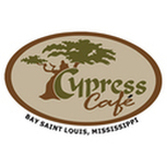
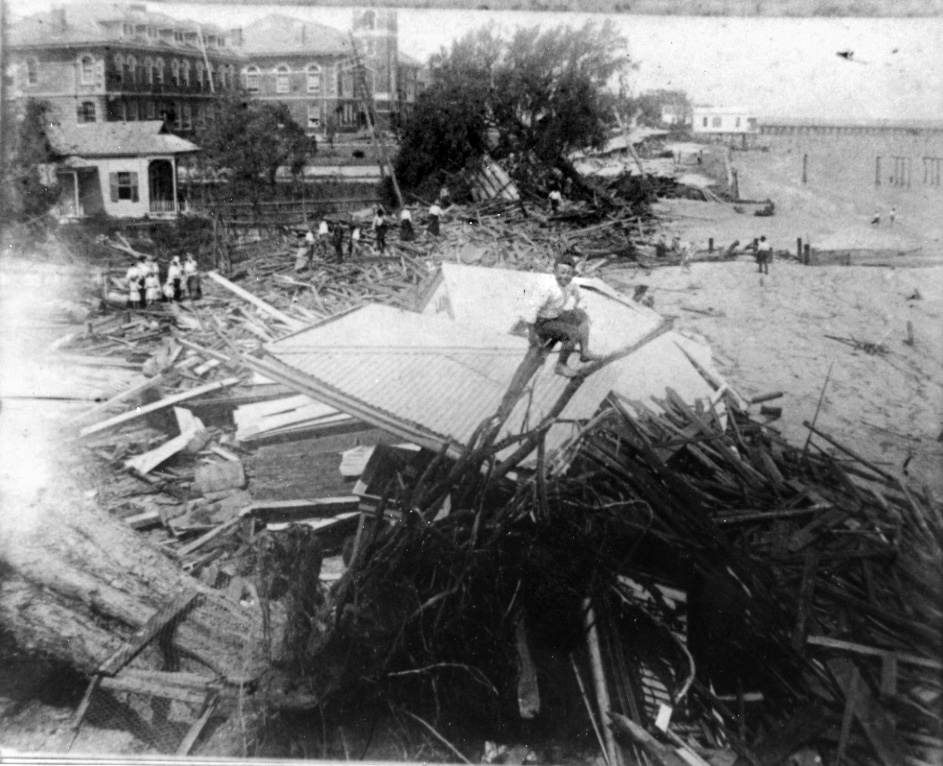
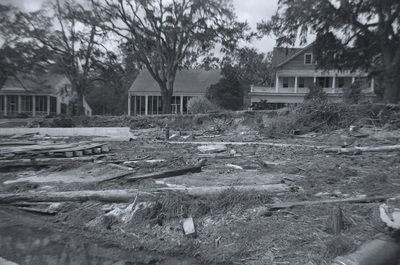





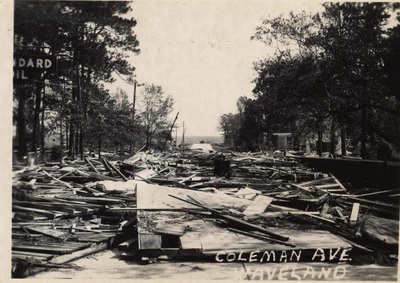





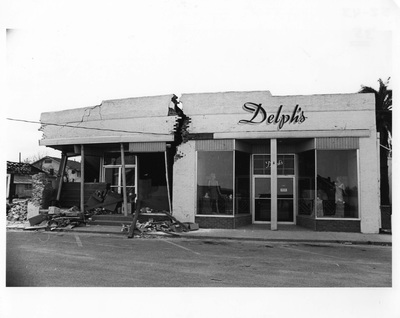





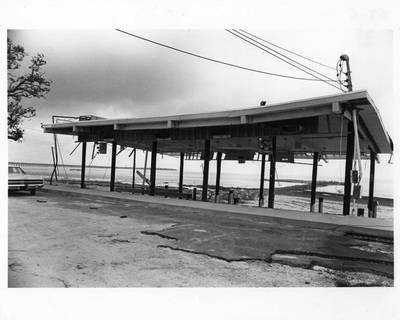





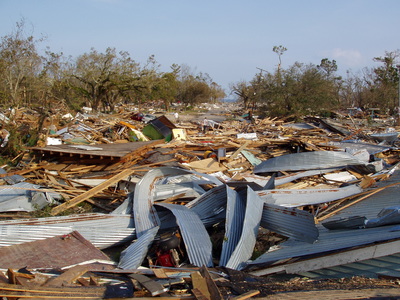





























 RSS Feed
RSS Feed























